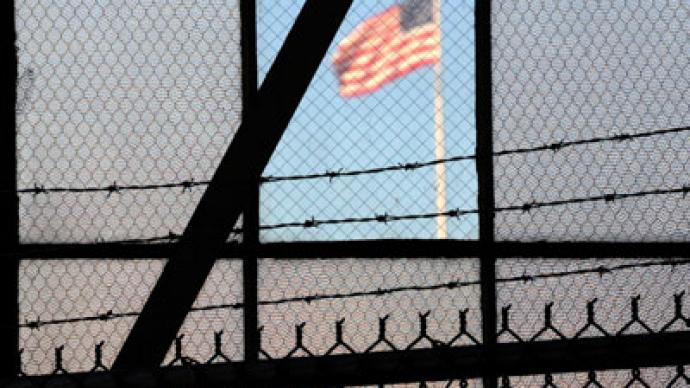Military and federal US prisons have the capacity to take in the 166 detainees currently held in Guantanamo Bay, as long as a number of modifications are made to enhance and secure the facilities.
Senate Intelligence Committee Chairwoman Dianne Feinstein, who has long been pushing to bring Gitmo detainees to the US, requested a report from the Government Accountability Office (GAO) regarding the necessary steps to transform US prisons into acceptable detention centers for the inmates, many of which are foreign nationals accused of terrorism.
The GAO report found that 2,000 Federal Bureau of Prison facilities would be suitable for Gitmo detainees, since 98 of these already house inmates on terrorism-related charges and are therefore experienced in dealing with that type of inmate. Foreign nationals accused of terrorism cannot be held in state prisons, and legally cannot be confined in the same facility as imprisoned US nationals.
The main problem with the Federal Bureau of Prisons is that the facilities are already overcrowded, and Gitmo inmates would need to be separated from the rest of the prisoners. In order to make this possible, regular inmates could be forced to share a cell with two other roommates rather than one.
However, the six Department of Defense (DOD) prisons located throughout the US are only at 48 percent capacity. But most of the DOD facilities are located on active military bases that are close to the general public.
“The physical location of the detainees could become a target for individuals and groups intent on harming the detainees, or harming the US military personnel involved in detention operations, which could result in unintended harm to the general public,” the report states.
But Feinstein believes that where there’s a will, there’s a way: with modifications to some of the US prisons, the controversial Guantanamo Bay detention center can be permanently closed.
“This report demonstrates that if the political will exists, we could finally close Guantanamo without imperiling our national security,” she said in a statement after releasing the report Wednesday.
“The United States already holds 373 individuals convicted of terrorism in 98 facilities across the country,” the senator added. “As far as I know, there hasn’t been a single security problem reported in any of these cases. This fact outweighs not only the high cost of maintaining Guantanamo – which costs more than $114 million a year – but also provides the same degree of security without the criticism of operating a military prison in an isolated location.”
If Gitmo detainees were to be moved, the DOD would need to find a way to protect them from “public curiosity”. International law protects the foreign nationals from public identification, posing a problem if the detainees use the outdoor recreation areas that can be seen by passersby.
Furthermore, if the DOD continues to gather intelligence information from the detainees, the facilities would need to be equipped with recording devices.
While the Justice Department currently has no plans to transfer the detainees to the US, their agencies have said that they could “safely and securely house and transport the detainees if requested to do so and if given the necessary resources, planning lead time, and authorities,” the GAO report states.
The report was initially requested by Feinstein in 2008 when Barack Obama was campaigning to close the prison. Although the president promised to have the facility closed within a year of taking office, Congressional members in fear of bringing the detainees to the US blocked his efforts to do so.
In order to bring the detainees to the US, Congress would need to repeal laws preventing the Justice Department from taking custody of the inmates.
“It’s hard to find anyone anywhere who wants his or her state to house the next Guantanamo," Senate Republican leader Mitch McConnell said in 2009. But the report shows the feasibility of such an initiative, bringing the US perhaps one step closer to considering a transfer.

